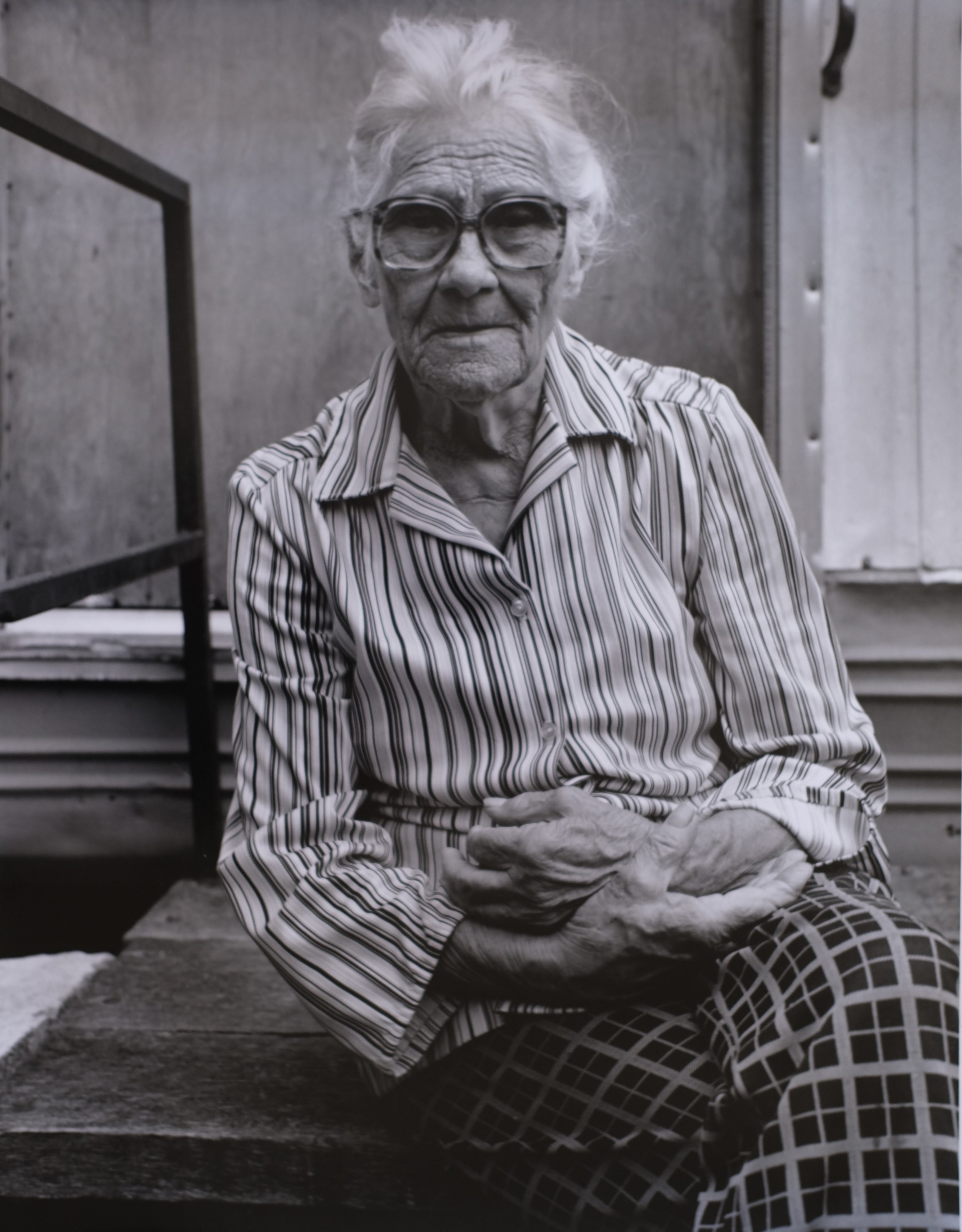DiAne Covert
Diane Covert is a documentary photographer. In the 1970s and ’80s, her work focused on life in her native Midwest. During the mid to late 1970s, under a contract with the county to help voters understand the conditions within the jail, she photographed inmates in the Jackson County Jail. She also photographed in a small meatpacking plant in Kansas City.
In the 1980s, with the aid of a grant from the State of Missouri, she photographed family farm foreclosures. This was caused by run-away inflation and grain surpluses that led to bank repossession of many old, established family farms.
During that period she began a project to photograph everyone who lived in a small, economically struggling, rural community along the Missouri River. Missouri City, population 343 at the time, was comprised largely of a small number of inter-related families, mostly descendants of people who had originally worked in the coal mines. These images cover everyone from all the students in the town school through the very elderly, as well as families with younger kids.
During this period, she free-lanced for corporations and political campaigns and taught photography at both the Kansas City Art Institute and Avila College.
In the 1990s, after her family relocated to the East Coast, she photographed Holocaust survivors in the Greater Boston area. The many hours that she spent with Holocaust survivors led to her interest in political violence. Starting in 2002, she worked with hospitals in Israel to collect x-rays and CT scans of survivors of terror attacks in Jerusalem.
These radiographs included individuals of all ages, many ethnicities, nationalities, income levels, and religious affiliations: anyone who happened to be in the wrong place at the wrong time. One of the interesting aspects of this work is Ms. Covert’s recognition that x-rays are documentary photographs but made using a different wave length of light.
The installation is supported in free-standing kiosks, printed on Duratrans, a special x-ray film, and backlit. It was seen by roughly 1.8 million people and received international coverage.
In 2010, she was shown an old catalog of photographs of anti-Jewish violence, (pogroms), made during the Russian Civil War period. From these fragile images, she built Why They Left, an installation of photographs originally made by family members, Red Cross representatives, medical professionals, perpetrators and Russian and Ukrainian bureaucrats. As with the X-Ray Project, these photographs are preserved on Duratrans film and backlit in free-standing boxes.
Diane Covert studied at Rhode Island School of Design and The Kansas City Art Institute. She taught at The Kansas City Art Institute and at Avila College. Her work is in several corporate, private, and institutional collections. Her free-lance activities have included many political campaigns and corporate shoots. She has received two regional NEA Grants, and various other grants, and has been exhibited in a range of galleries.


